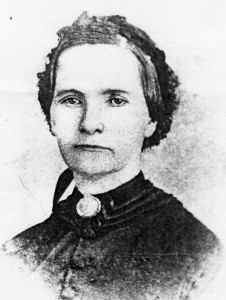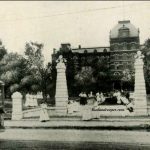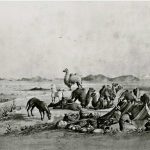
The little of town of Knoxville, Georgia is so small you wouldn’t have heard of it even if you drove right through it. It’s the county seat of Crawford County, but it only has about 800 people living there.
Even John Pemberton, the inventor of Coca-Cola left town as a young boy and moved to Columbus.
Who knew that small, unassuming Knoxville, Georgia would be the birthplace of one of the most recognizable state icons in the nation…dare I say the world?
Also, who knew that particular state icon would be the brainchild of a seventeen year old girl?
First, let me set the stage a bit. The state icon I’m referring to is the Lone Star flag belonging to the state of Texas. Few know that Georgians were very instrumental in Texas independence, the Texas Republic, and the eventual statehood of Texas.
Colonel James Walker Fannin, Jr., Mirabeau Buonaparte Lamar, Thomas J. Rusk, and William Ward are just some of the pivotal names in Texas history who had ties to Georgia.
In fact, in 1836 it was Colonel James Walker Fannin, Jr. who oversaw the formation of the Macon Volunteers with the assistance of William Ward. On their way back to Texas they picked up a few more Georgians in Columbus and Milledgeville.
As they moved through the Knoxville area on the return trip to Texas Johanna (Joanna) Troutman was moved by the romanticism of the moment and the fervor for independence, so much so she took one of her silk white petticoats and fashioned a flag.
Yes, the FIRST Lone Star flag.
A San Antonio newspaper from 1934 mentions, “…on each side of the flag, in the center, was placed a large azure star of five points. Above the star on one side was the inscription, ‘Liberty or Death,’ and on the other the Latin motto Ubi libertas habitat ibi patria est or Where liberty dwells, there is my country.
Troutman presented the flag to Colonel William Ward and it was raised high about the American Hotel at Velasco, Texas on January 8, 1836. Later it flew as the Georgia Battalion flag at Goliad.
Colonel James W. Fannin raised it as the Republic of Texas flag upon hearing the Texas Declaration of Independence had been signed.
Troutman never set foot in Texas, but an article by A.C. Greene advises two pieces of silver belonging to Santa Ana was sent to her after his capture in appreciation for her efforts.
Wouldn’t you like to know where the silver is today?
She died in 1879 and was buried next to her first husband near Knoxville. In 1912 her body was moved to the Texas State Cemetery where a bronze statue stands to honor her.
Johanna (Joanna) Troutman’s portrait also hangs in the Texas State Capital.
The town of Knoxville has a monument to Troutman here.
Image Source: http://www.thegagenweb.com/gacrawfo/Biographies/jtroutman/JoannaTroutman-age52.jpg




I really enjoyed this bit of history! Love reading your stories.